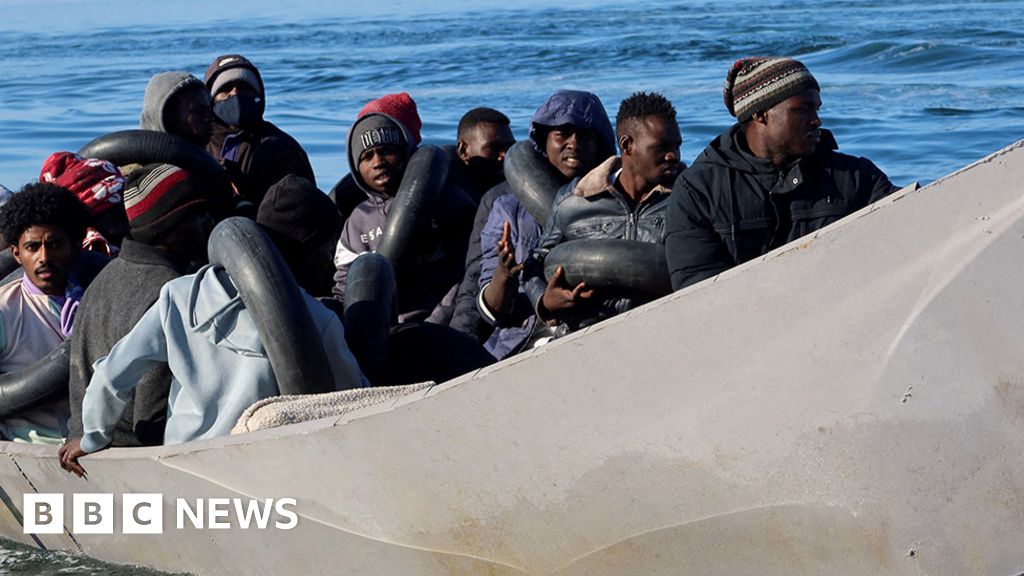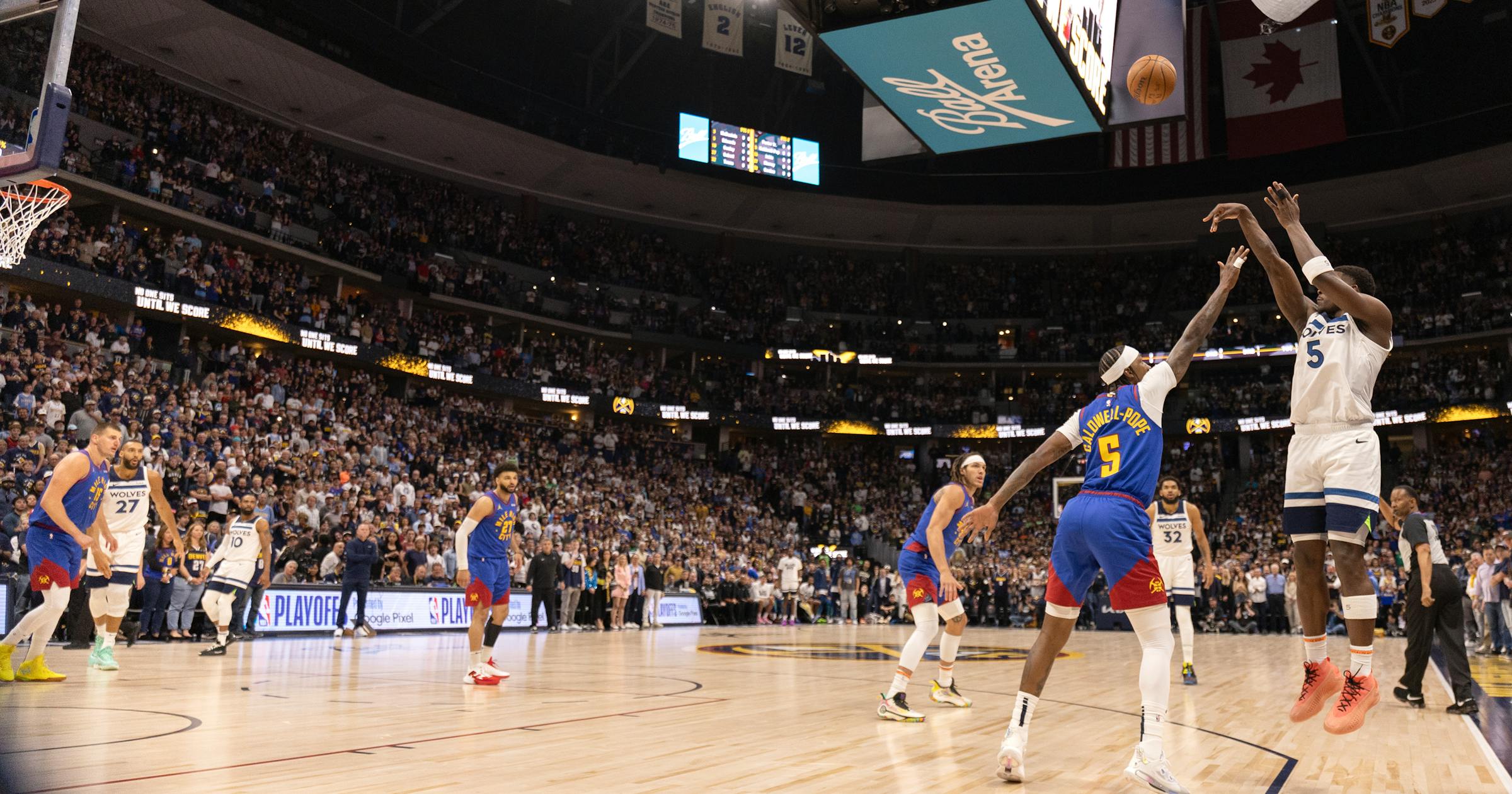
image source, Watching the Sea / Carolina Sobel
Four survivors were spotted in a small iron boat – 41 others died when the boat they were originally in sank
In grainy images captured from a plane soaring in the sky, four people kick adrift in an iron boat in the expanse of the Mediterranean Sea waving their arms in distress.
The four survived by floating with inner tubes and life jackets until they found another empty boat, likely from a former migrant crossing, and climbed inside. They spent several days drifting before they were rescued.
A day after news of the tragedy broke, migrants in the Tunisian city of Sfax prepared to cross the same crossing.
A man who fled fighting in Sudan’s western region of Darfur told BBC Arabic he planned to seek asylum in Tunisia, but was ready to take a boat if that didn’t work out. “I just survived a war,” he said, “and I have nothing to lose.” Another, from Kenya, dreamed of a better life for his family in Europe.
If they continue the journeys, the two men will join thousands of others who have risked their lives this year on what has been called the world’s most dangerous migration route.
Poorly designed and overcrowded boats, inclement weather and lapses in international efforts were all risk factors – experts told the BBC – and one search and rescue NGO described the central Mediterranean as a “graveyard”.
Statistics show an increase in deaths
You may feel like you’re seeing more reports of shipwrecks this year in the central Mediterranean – and both crossings and deaths seem to be on the rise.
The European border agency Frontex says the central Mediterranean is the “most active route” into the EU, with national authorities reporting more than 89,000 detections in the first seven months of 2023 – more than double last year, and the highest since 2017. .
The people making the voyage set sail from the shores of North Africa, usually to Italy.
The International Organization for Migration (IOM) has recorded more than 1,800 migrant deaths in the central Mediterranean so far this year, compared to 1,400 for the whole of 2022.
Among the migrant shipwrecks this year was a fishing trawler crammed off the coast of Greece, killing hundreds in one of the worst humanitarian disasters in the Mediterranean in recent years.
The IOM says there is strong evidence that many wrecks are “invisible”: unregistered boats disappear and there are no survivors, meaning the true death toll is likely to be much higher.
Why do people make the dangerous journey
Those who embark on the perilous journey come from all over the world and have various reasons for wanting to reach Europe, from fleeing war or torture to looking for jobs.
After being rescued from an overcrowded rubber raft this summer, a 16-year-old boy from Gambia told the BBC he left home three years ago to “work hard and help my family”.
He was aware of the danger of the journey, having lost an 18-year-old friend on the crossing. But he said this did not deter him – he “lost his life for his family, his community and his nation”.
This year, Tunisia overtook Libya as the main trigger point – amid a wave of racism against black Africans there.
Some say the Libyan crossing is still more dangerous, for geographic and political reasons.
“In terms of fatalities, I think opening a route to eastern Libya (from territory controlled by Wagner-backed militias) has a greater impact,” said Nando Segona, a University of Birmingham professor and migration expert.
“It’s much longer than that and it also brings boats to the border between Italian and Greek national waters – two governments are currently not keen on being seen to offer rescues of migrants at sea,” he said, referring to the Greek shipwreck in June. Example.
Unseaworthy boats
Migrants usually travel on overcrowded and unseaworthy boats, with limited flotation devices in case they capsize.
Types of boats include inflatable pontoons and fishing trawlers – and on the Tunisian road, metal boats are common.
image source, Photo: Jihad Obeidlawi/Reuters
Experts say metal boats like this are more likely to capsize in stormy seas
Frontex spokesman Chris Borowski described the casts as “coffins in water”.
“Combine this with the fact that usually dozens of them are launched at once with 40 or more people on board and you have a recipe for disaster,” he said.
Mr. Borowski said “greedy smugglers” were using metal boats to offer “discounted” transit as they were competing for migrants’ business.
Peak season and storms
Crossings in the central Mediterranean are seasonal, with an increase in attempts in the summer. But the weather can be unpredictable and successful voyages across the Mediterranean can take days.
“If there are storms or the seas are heavy – which may become more frequent with climate change – there is a much greater risk to life,” said Ryan Schroeder, a spokesman for the International Organization for Migration.
“Sometimes, even bad weather does not prevent smugglers from sending people out to sea,” he added, referring to boats that recently capsized near the island of Lampedusa, which were launched despite rough seas.
Porowski says bad weather makes it more difficult to spot boats in distress.
“Imagine you’re looking for a Vauxhall Corsa from the air in an area the size of the UK. Now try looking for ten or more offshore,” he said. “This is the grave challenge in the central Mediterranean. This is accompanied by an unforgiving sea, especially when the weather turns bad, as we have seen in recent days.”
`willingly cemetery’
While Frontex provides “general oversight and technical support”, Professor Segona says national governments mostly govern search and rescue (SAR) operations in the central Mediterranean, with closely regulated NGO ships working closely.
Mr Schroeder of the International Organization for Migration said search and rescue efforts were no longer “proactive, comprehensive or adequately resourced” as they were during the massive Italian-led Mare Nostrum rescue in 2013-14.
image source, Greek Coast Guard
Fishing boat near Greece in the hours before it sank – the coast guard has been criticized for its response
Under the current system, Mr. Schroeder said, IOM is concerned that “search and rescue gaps, alleged delays in rescue and failure to respond to distress calls may contribute to tragedies on this route.”
More important were the NGOs operating rescue ships in the central Mediterranean. Wasil Chausel, communications coordinator at SOS Humanity, said the route “has become extremely deadly due to the reckless and negligent deterrence policy that European countries have pursued for years.”
German NGO Sea-Watch said the EU had “voluntarily established a cemetery”. It said there was a lack of search and rescue coordination and that the Libyan coast guard was carrying out “illegal withdrawals” prepared and trained by the European Union.
And last month, the European Union signed a $118m (£90m) deal with Tunisia to try to curb “irregular” migration.
A spokesperson for the European Commission defended working with North African countries, saying that the “very high number of casualties” in the Mediterranean meant that “it is important to continue strengthening the capacity of Libyan coastal authorities to carry out effective search and rescue operations in accordance with international standards”.
NGOs have also criticized a new law in Italy that requires its rescue ships to head to more distant ports after an operation rather than continuing to patrol for more migrant boats in distress. They say this reduces their time in areas where wrecks are more common.
Italy says the aim is to spread the arrivals across the country.
Critics of rescue NGOs say their presence encourages migrants to embark on a potentially fatal journey – NGOs dismiss this.
Frontex’s Borowski acknowledged that “we can and, in fact, must, do better” at stopping “tragedies at sea,” calling for “common solutions.” IOM spokesman Mr. Schroeder said all efforts should “focus on saving lives and addressing the reasons why people risk their lives”.
The International Organization for Migration and other UN agencies have called for coordinated European search and rescue operations in the central Mediterranean, and for safer legal pathways for migration and asylum to prevent deaths at sea.
A spokeswoman for the European Commission said its efforts to strengthen search and rescue coordination among its members had been “intensive”. It was working to deter smugglers and develop safe routes for people coming into the EU that would break the “business model of smugglers and human traffickers”.
They said shipwrecks, such as the one this summer off the coast of Greece, are “another call to action” that highlighted the “urgent need to step up our work”.
Additional reporting by Bassam Bonini, BBC Arabic

“Travel specialist. Typical social media scholar. Friend of animals everywhere. Freelance zombie ninja. Twitter buff.”




More Stories
Sadiq Khan re-elected Mayor of London in Labour’s latest victory
Sadiq Khan has won a third term as Mayor of London, capping off Labour’s strong performance in the English local elections
Israel informed the United States of a plan to evacuate Palestinian civilians ahead of the possible Rafah operation